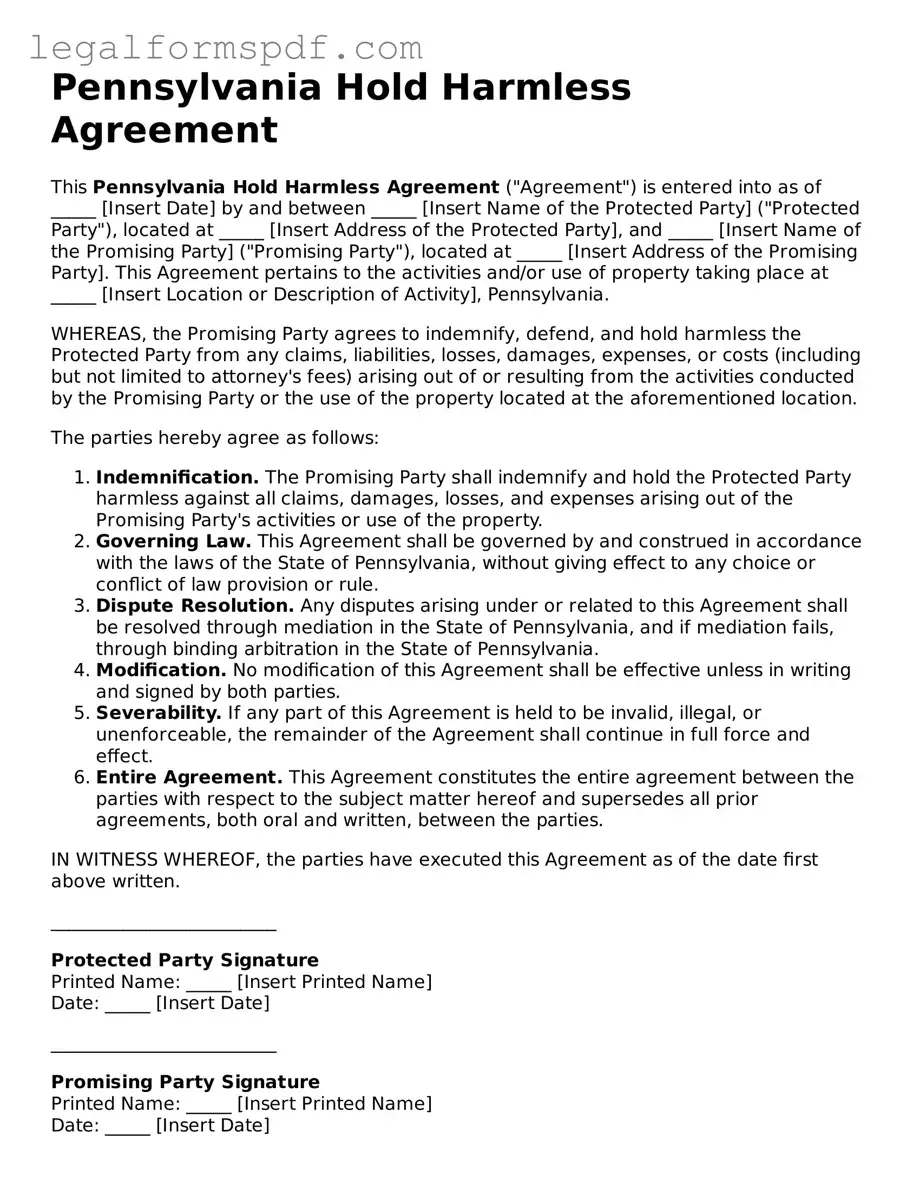Pennsylvania Hold Harmless Agreement
This Pennsylvania Hold Harmless Agreement ("Agreement") is entered into as of _____ [Insert Date] by and between _____ [Insert Name of the Protected Party] ("Protected Party"), located at _____ [Insert Address of the Protected Party], and _____ [Insert Name of the Promising Party] ("Promising Party"), located at _____ [Insert Address of the Promising Party]. This Agreement pertains to the activities and/or use of property taking place at _____ [Insert Location or Description of Activity], Pennsylvania.
WHEREAS, the Promising Party agrees to indemnify, defend, and hold harmless the Protected Party from any claims, liabilities, losses, damages, expenses, or costs (including but not limited to attorney's fees) arising out of or resulting from the activities conducted by the Promising Party or the use of the property located at the aforementioned location.
The parties hereby agree as follows:
- Indemnification. The Promising Party shall indemnify and hold the Protected Party harmless against all claims, damages, losses, and expenses arising out of the Promising Party's activities or use of the property.
- Governing Law. This Agreement shall be governed by and construed in accordance with the laws of the State of Pennsylvania, without giving effect to any choice or conflict of law provision or rule.
- Dispute Resolution. Any disputes arising under or related to this Agreement shall be resolved through mediation in the State of Pennsylvania, and if mediation fails, through binding arbitration in the State of Pennsylvania.
- Modification. No modification of this Agreement shall be effective unless in writing and signed by both parties.
- Severability. If any part of this Agreement is held to be invalid, illegal, or unenforceable, the remainder of the Agreement shall continue in full force and effect.
- Entire Agreement. This Agreement constitutes the entire agreement between the parties with respect to the subject matter hereof and supersedes all prior agreements, both oral and written, between the parties.
IN WITNESS WHEREOF, the parties have executed this Agreement as of the date first above written.
_________________________
Protected Party Signature
Printed Name: _____ [Insert Printed Name]
Date: _____ [Insert Date]
_________________________
Promising Party Signature
Printed Name: _____ [Insert Printed Name]
Date: _____ [Insert Date]
